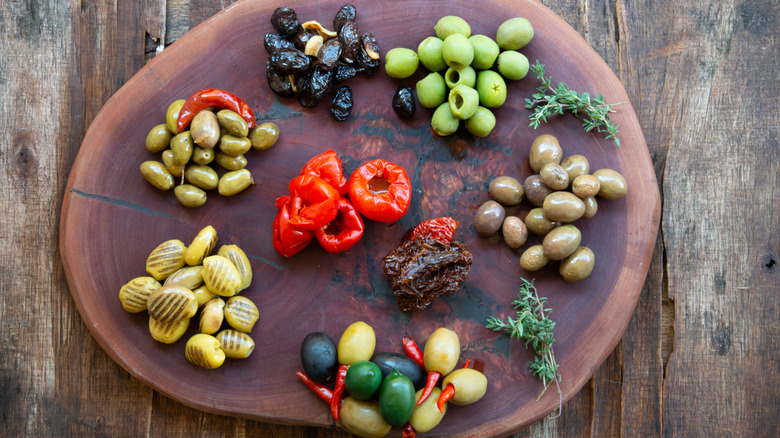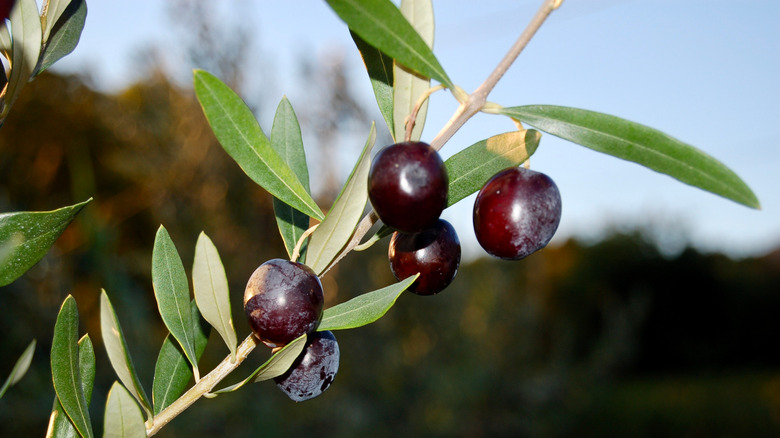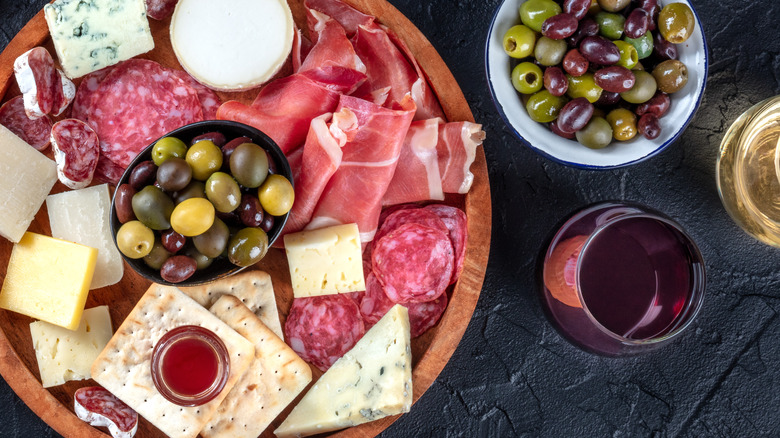What Makes Nyons Olives Unique
Whether you're putting together an elegant charcuterie board or preparing dirty martinis to serve guests, having the right olives on hand can make or break flavor profiles and presentations. These days, it's easy to get overwhelmed by the great variety of olives available in markets if you're trying to branch beyond the cocktail (manzanilla) with pimento variety.
From bold, salty Kalamata olives to olives stuffed with garlic, knowing which olive type will satisfy your cravings can turn staunch olive haters into avid olive lovers. And the simple pleasure of enjoying olives goes back to Roman times; researchers discovered an olive press in the region dating to the 1st century B.C. according to Taste of France. But if you're looking for a new addition to salads or want to liven up tonight's appetizer, we have a unique olive for you to try. Hailing from France and having a longstanding history, the Nyons black olive is ready to make your acquaintance.
How Nyons black olives are made
Nyons olives are part of the Tanche family, a type of olive grown in France's southern region and is the first kind of olive to have received France's AOC designation (via Baronnies Tourism). The AOC label is highly prestigious and marks a group of protected olives and olive oils that are produced under a very specific set of guidelines, according to La Compagnie de l'huile d'Olive. Olives earning AOC approval have come from trees that are at least five years old and have been pruned only once every three years. Also, the water used throughout AOC-approved olive groves must pass strict regulatory requirements.
One other thing that differentiates Nyons black olives is the time at which they are removed from their stems. Very Gourmand notes that this variety is harvested when it is fully ripe and slightly wrinkled from the cold weather season.
A taste of history
Because these olives would be quite bitter eaten fresh out of the olive grove, the harvested olives are either fermented in salt water, pricked and salted, or sealed in airtight containers. Taste of France notes that each of these methods will produce a slightly different texture and taste, but these olives will always turn into a wrinkled, dark shade known as "monk's habit." Barral describes the olive's taste as subtle with a generous texture; while Taste of France notes a fleshy, fruity flavor profile with sweet scents of nuts, candied fruit, and chocolate.
Keep in mind that eating these kinds of olives means you're not only sampling farming practices that have been around for centuries but also tasting the unique flavor of a French countryside terroir — what Eataly describes as "taste of a place." Sounds like a pretty great conversation starter for tonight's dinner, if you ask us.


